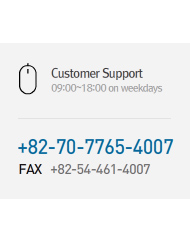A Brief on Account Downtime Policies
Page info
Name Loyd Horan / Date25-06-11 03:31 Hit515 Comment0Link
Contents
When it comes to online transactions and customer relationships, there are instances where customers may experience some sort of issue with their account, or they might be in a situation where they need some time to adjust to certain account restrictions. This is where the 'cool-off period' or temporary account restrictions come into play.
A cool-off period is a predetermined period during which users are unable to perform certain actions on their account, such as making major changes to account settings. This feature is commonly implemented by online banking systems, investment platforms, and other financial services to prevent potential risks and protect users from themselves.

Setting Up a Cool-Off Period: A Detailed Blueprint
Benefits of Implementing a Cool-Off Period
Before we dive into the steps on how to set up a cool-off period, let's take a look at the perks of having one. These benefits include:
- Preventing users from withdrawing large amounts of money within a short period, thereby preventing fraud.
- Allowing users time to think before making significant large purchases, such as switching to a different payment method or changing the account's login details.
- Helping to prevent phishing and other types of hacks by requiring users to wait a certain amount of duration before performing certain actions.
Implementing a cool-off period requires careful planning of several factors, including the desired duration of the period, the types of actions to restrict, and how to inform users about the restrictions. Here are the steps you can follow to set up a cool-off period for your account:
- Determine the purpose and period of the cool-off period
- Identify the types of accounts that will be subject to the cool-off period, such as personal or business accounts.
- Decide on the boundaries you want to impose, such as limiting withdrawals, blocking purchases, or restricting changes to account settings.
- Design a system to track users' actions and enforce the cool-off period.
- Evaluate your system to ensure it works as intended and make necessary changes.
- Inform the limits clearly to your users and provide a way for them to check the status of their accounts.
Security Considerations
When implementing a cool-off period, there are several precautionary considerations to keep in mind, mega888 including:
- Ensuring that the cool-off period is enforced in a way that is transparent and trackable.
- Protecting sensitive data from unlawful access during the cool-off period.
- Authenticating users' identities before allowing them to perform restricted actions.
To ensure the efficiency and achievement of your cool-off period, follow these guidelines:
- Notify clearly with your users about the limits and the goal of the cool-off period.
- Provide a user-friendly platform for users to view the status of their accounts and the length of the cool-off period.
- Continuously assess and evaluate your system to detect areas for enhancement.
- Be prepared to adjust your system as needed in response to new threats or user input.
Warning: Use of undefined constant php - assumed 'php' (this will throw an Error in a future version of PHP) in /home1/icecap/public_html/theme/icecap/skin/board/basic_en/view.skin.php on line 149













